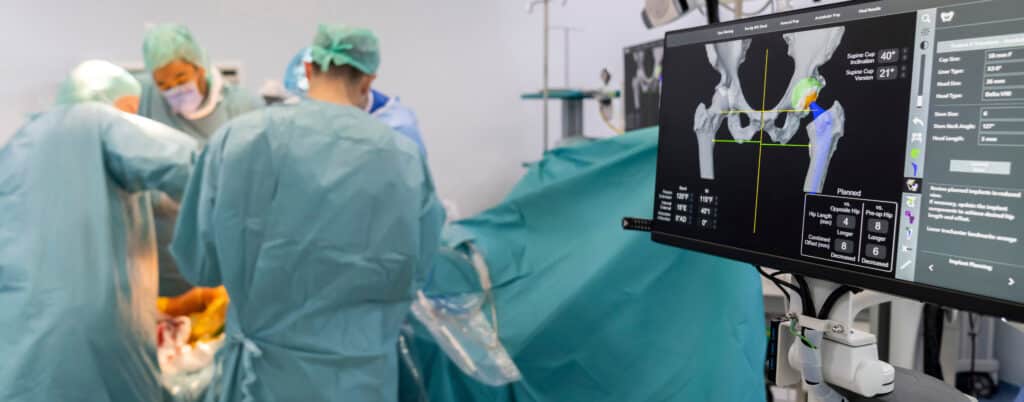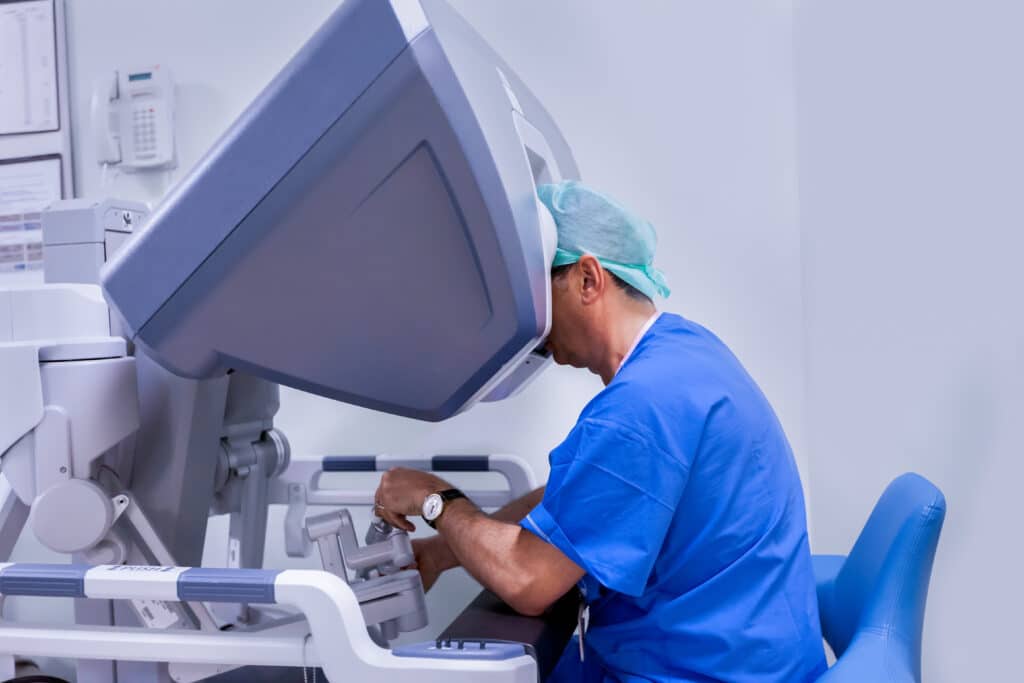Hip Replacement Recovery Time
Hip replacement surgery produces an overwhelmingly substantial reduction in pain for most people who undergo the procedure. Even more promising than the resulting pain relief is that hip replacement recovery time is greatly reduced for many patients as advancements in surgical techniques, technology, materials, and medications occur.

Hip Arthroplasty
In hip replacement surgery, also called total hip arthroplasty (THA), a surgeon removes damaged portions of the hip joint and replaces them with prosthetic parts made from metal, ceramic, or plastic. The prosthetics serve to restore joint function and reduce pain, and this procedure has provided positive outcomes for decades. But as positive surgical results have stayed consistent, patient desire for a quicker return to an active, high-quality life has increased.
How do you know if you need a hip replacement?
Most people opting for a hip replacement have been experiencing pain so significant it interferes with their daily routines and athletic activities. They may have tried non-surgical treatments and either had no results or results that became less effective over time. While the thought of undergoing a hip replacement may be daunting, the procedure might be quicker and easier than expected.
Hip Replacement Recovery Time
According to the Arthritis Foundation, more than 400,000 total hip replacements are performed annually in the United States. Even just a few years ago, hip replacement surgery often required several days or a week in the hospital, followed by more time in inpatient rehab. Once released, patients relied on a walker or crutches as they regained enough mobility and strength to move unsupported, which could take many weeks or months.

Cut to today, and some patients leave the hospital mere hours after their surgeries. “Long” hospital stays are now one or two nights, not a week. Patients may not need a walker at all, requiring only crutches or a cane for a matter of days while they become accustomed to their new joint. Certainly, some people take longer to recover, but the overall trend points to reduced healing times for many.
Hip Replacement Surgeons
For those with chronic hip pain, excellent results and a dramatic decrease in hip replacement recovery time are a modern miracle. While innovative technologies backed by evidence are a huge piece of these successful outcomes, no new approach substitutes for a skilled and experienced surgeon.
Excellent orthopedic hip specialists develop surgical plans tailored to patients’ symptoms and lifestyle goals and employ the newest technologies to achieve positive results. These technologies include robotics, computer navigation, 3D-printed implants, and augmented reality.
In addition to modern surgical developments , today’s anaesthesiologists also have an updated pain control regimen for total hip replacement surgery. Joint replacement surgeries of the past were only performed under general anesthesia, but now anaesthesiologists have more options to better tailor treatment to the patient. Instead of general anaesthesia, an epidural or spinal anesthesia can be used. The tissues around the joint are also often injected with a cocktail of pain reducers, anti-inflammatory steroids, blood pressure drugs, and a medication that reduces bleeding. These medication changes decrease the need for post-surgery pain relievers while lowering the risk of surgery-related complications. And since outcomes are immediately better following hip replacement surgery, patients can start physical therapy much sooner. Some patients even start this part of the healing process the same day, further reducing hip replacement recovery time.
The initial arthroscopic incision is also much smaller than incisions used to be. Skilled surgeons start with a tiny cut and enlarge only as much as necessary. They also now use a medication that reduces bleeding during surgery (tranexamic acid, TXA) to minimize blood loss. Decreased blood loss means less post-surgical swelling and pain.
Latest Developments in Hip Replacement Surgery

During surgery, computer-connected tracking devices are placed around the hip joint. These are paired with robotic surgical arms that help surgeons align the patient, the replacement joint, and the surgical tools as precisely as possible. Once the prosthetic hip joint is in place, a computer can create a 3D rendering of the joint and implant that helps the surgeon assess the overall alignment and stability. Ensuring proper positioning in this way can be integral to delivering the best possible functionality of the new joint.
The materials used for hip replacements have also improved. Higher-quality plastics with special coatings last longer and allow the bone to grow onto implants and improve their fixation. The increased stability these implants provide means additional surgeries to revise their placement are less likely. More stable joints also cause less pain.
Because patients are in better condition immediately after surgery, they are more likely to go home right away. For otherwise healthy patients, a same-day discharge means less exposure to sick people than they’d get in a hospital. Those living alone or with additional medical issues may be better off with a couple of days in the hospital. This is still less than the several days or the week that used to be commonplace.
Skilled surgeons, refined medications, and technology-assisted techniques greatly improve the experience and recovery timeline for joint replacement surgery. Less pain, more mobility, and a quicker return to living a preferred lifestyle are more possible today than ever before.
If you have a hip injury or pain and would like to speak with an orthopedic hip specialist, please contact us or comment below.
Leave a Reply